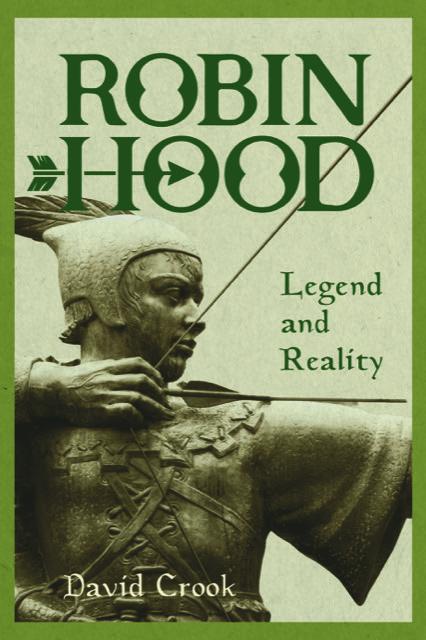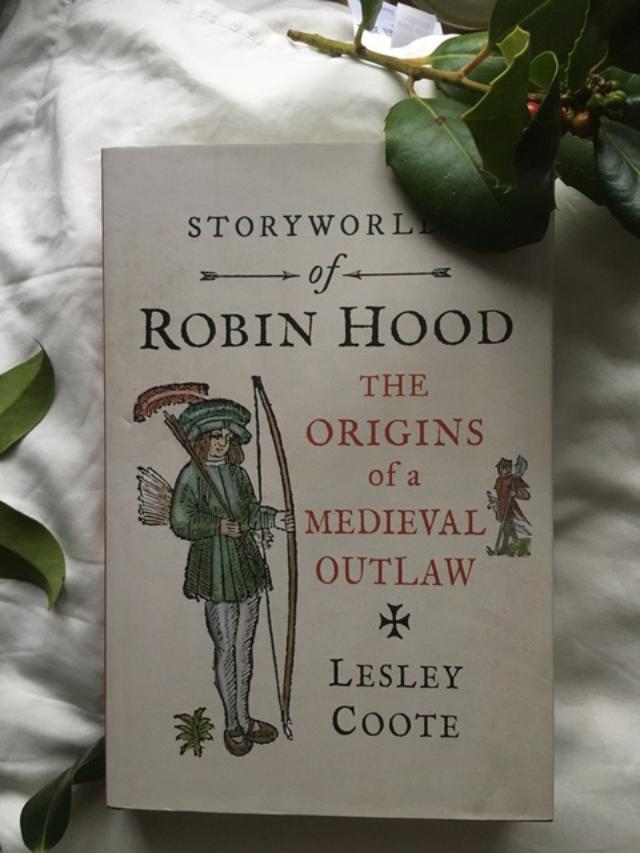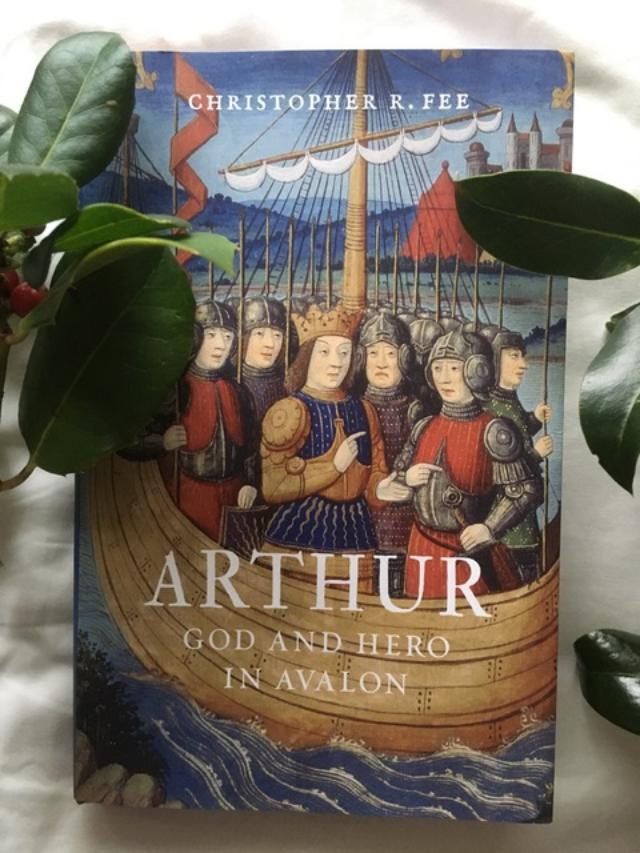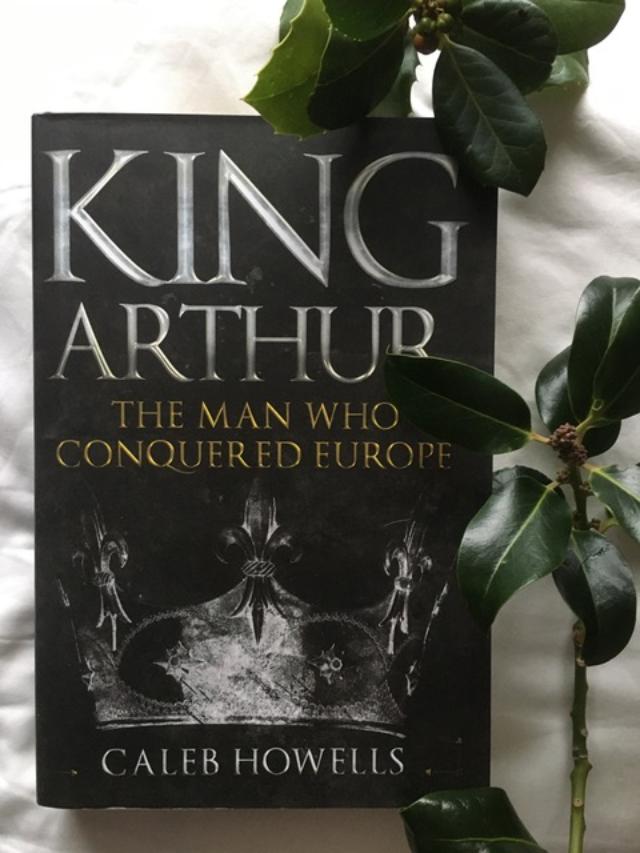
As I write this, I am looking out of my cottage window in the Cotswolds and it is getting dark. In a few shorter and shorter days, it will be the shortest day of the year, in this oddest of years. Like you I am hoping that the shortest day will paraphrase the whole of 2020. From the 21st hope will spring anew and hopefully we will see the light springing up from the end of the tunnel. As a historian with an eye towards the mythic influence of the past my thoughts turn at this time to the colour green, often in the form of the beauty of an English greenwood in May.
In musical terms no one quite catches it in the way that Benjamin Britten does in the Spring Symphony. However, I digress. The Greenwood was the realm of Robin Hood and, in Robin Hood: Legend and Reality by David Crook (Boydell Press, Woodbridge, Suffolk, £60.00) this issue is explored very thoroughly indeed. This highly engaging and wide-ranging book taking us from a thorough retelling of the medaeval tales of Robin Hood through to those who chronicled the legends, folklorists, scholars, historians and others. This is more than just a detailed survey; it is an overview of the entire culture of Robin and who he might have been – the author offers his own assessment at the end of the text: I will not reveal it for wont of spoiling the surprise.
As a historian I like thoroughness and this is present in spades and makes this the go-to book for those seeking to expand the oeuvre. I am also a romantic and this work fulfils that angle consistently. From chapters on the Robin Hood names that abound throughout the Medaeval record to a chapter on the Robin Hood places. There are maps provided exhibiting a surprising number of places. The author, now retired, has spent his working life in the National Archives and has put his retirement to very good use trawling parish and even cathedral records. This book is a delight with an extensive and very useful bibliography at the back. He also gives a lot of time and is very generous with the time given to the different strands of thinking by different voices past and present.
It is quite extraordinary how the tales of a medaeval outlaw have captured the imagination of the world – and taken from a possible real history and into the realms of myth. In a sense the story of Robin Hood is also a story of a myth in the making: a rarity of our time, given that Robin Hood could possibly have its foundations in the immediately pre-Medaeval era – or even before that, and in an entirely different country: there is a theory that the Middle-East is the origin, which makes the Medaeval origins in England all the more interesting given that this was the era of the Crusades.

Whilst we are on the subject Storyworlds of Robin Hood: The Origins of a Medieval Outlaw by Leslie Coote (£30.00, Reaktion Books) looks at Robin Hood from the early stories in both the English and the French (yes, he was that popular!). This work is also thorough but not in the way of the previous tome. This one reflects purely upon the literary angle. It is no less interesting for this; indeed, it is fascinating. The author takes us from the written word to the Romance, from Robin Hood the trickster through to Robin Hood the joker – and in all of this writes in a lively style that captivates and enchants, making parallels with the culture of Southern France, in particular the Occitan civilisation of Southern France, so soon to disappear in the genocidal campaign against the Cathars. Was there an element of heresy in the Robin Hood legends?
In the chapter Robin Hood and Maid Marian we have some interesting hints of the intricacies of the legends. Robin, in the pastourelles, composed in the 1100 to 1300’s, meets a shepherdess, a young girl of about fourteen years of age. The author tells us that in medaeval times this age marked the transition of a young girl to womanhood. She claims fidelity to Robin Hood in the face of an attempted seduction. Such is the detail that in the section we are told that the Shepherdess is offered a cloak of scarlet and green. These were expensive colours for their day. This leads onto the revelation that the name Will Scarlet, one of Robin’s followers (remember Ray Winston in Robin of Sherwood) ‘indicates an expensive dye, rather than being derived from ‘Scathelok’ or ‘safe-breaker’.
When I saw this my ears were pricked. There is an early Christian text called The Shepherd of Hermas – in which the ‘shepherd’ is visited by a Shepherdess. Further to this, scarlet was the colour of the Messiah: on Palm Sunday Jesus enters Jerusalem riding an ass and wearing robes of scarlet. There is definitely a supra-Christian flavour to the legends and this lovely and charming tome highlights much. It is an ideal companion to the one above.
A charming companion to the above books, if you are thinking of Christmas and of something off the beaten track, is the Wild Elemental Tarot, (£23.99, Schiffer) which has been created by Michelle Motuzas.
It is delicately presented in a small dark green box and takes us into the realm of animal and mythical archetypes. These cards are well drawn and do indeed draw the eye in to their liminal world. For Christmas and the very strangeness of it this year this is an ideal gift: it will draw you into the unexpected.

Continuing in the realm of mythic heroes we now turn to one of the most famous: King Arthur. Like Robin Hood there are those who say he was indeed historical and then there is the mythic school of Arthurian studies.
Arthur: God and Hero in Avalon (Christopher Fee, Reaktion Books, £16.00) looks at Arthur from the perspective of comparative mythology. Think not here of myth as ‘fantasy’ but instead as on ongoing accumulation of timeless truths that harbour both fact and echo. Fee places Arthur against the backdrop of Roman, Welsh, Anglo-Saxon and Celtic cultures. He writes about the evolution of Arthur as both historical figure and as myth and how both progressed to give us the impression today that King Arthur is like the reflection in a pane of glass: he is both there and not there. When we look out of the pane into reality he disappears; but this is the nature of both ancient history and myth. Both speak to us of origins but in entirely different ways. King Arthur, as the author points out, is the saviour of the British, he is The Once and future King, a concept surprisingly ingrained even today within the British consciousness.
Arthur was exploited by the Plantagenets, the Tudors and even the Hanoverians to a lesser extent. However, he really returned to prominence during the later Victorian period and the blossoming of the Pre-Raphaelite painters. Arthur is an eternal figure and it is as if everyone of these royal dynasties wanted his immortality to rub off on them. As TH White paraphrased in in his magnum opus, the wonderful The Once and Future King, it was the development of Right over Might rather than the other way around. Arthur is the paragon of that greatest of British virtues, Freedom of Speech and the rights of the individual – and boy, do we need him now!
This a charmingly written and presented book and Prof Fee makes his case well. This book is also well illustrated with images of all the old familiar places of the Arthurian mythos and a few that are unfamiliar.
Highly recommended.

In the early chapters of Sir Thomas Malory’s Le Morte D’Arthur, first published by William Caxton in 1485 (and for good measure, my chosen Desert Island book) we are told the story of how King Arthur, in the early years of his kingship, invaded and fought, successfully, against the Roman Empire. Now, given that the empire was in significant decline at the agreed dates of the Arthurian period, this is still a significant episode and an equally significant claim. With Brexit now likely to end on tears perhaps this is a timely book.
In King Arthur: The Man Who Conquered Europe (Caleb Howells, Amberley, £20.00) This question is posed. This is a fresh perspective on an episode generally ignored by scholars and writers – and from this perspective this is a genuinely fascinating read. However, in the fields of Arthurian studies we have to be careful not to root ourselves with too much certainty in the speculations as to who Arthur was – and wasn’t. The author presents Arthur as a likely war leader and places Arthur in the context of the Anglo-Saxon invasions and his battle against them. Arthur, as recent new evidence has shown, has many contexts, and it might well be that the legend as we now have it is really an agglomeration of different figures drawn together and compacted by historical time. This is a point made lucidly by the author, who offers an intriguing insight into what is essentially a whodunnit. This is a very compelling read full of interesting facts and context. I enjoyed it immensely and feel sure that you will too.
Also from Amberley is The World of Isaac Newton (Toni Mount, Amberley, £20.00). Newton was, and still remains, a colossus, one of the few who changed the world as we know it and, in undertaking the deed, changed our perceptions of ourselves. Newton was midwife to the modern world – but too often the modern world has ignored the bits about Newton’s life that its finds all too inconvenient. Years ago, I read Michael White’s biography of Newton, eagerly anticipating the chapters about Newton’s involvement in Alchemical studies – only to find that they were not there. To say that I was disappointed is an understatement. To appreciate Newton’s life without the context of his alchemical work is to misunderstand the whole in my opinion. Newton was passionate in his study of this much maligned subject, for without it and the subsequent schism of science and religion, there would be no modern world. In his biography I am delighted to say that alchemy is not ignored and is, indeed, taken into the context of Newton’s extraordinary life.
From Newton’s beginnings through alchemy and then his involvement in the foundation of the Royal Society this is an engaging and compelling read. The image in the plates section of the famous apple tree is enchanting. I thoroughly enjoyed it.
The Da Vinci Enigma Tarot, Caitlin Matthews (£33.99, Schiffer) is a treat for the eye and a superbly designed box set of beautiful cards that really offer us am intriguing insight into Da Vinci in a quite unexpected way. The accompanying book is highly informative of both Da Vinci and his working techniques but also is a stand-alone piece that exhibits the author’s wide-ranging but incisive knowledge of this most enigmatic of painters. I really cannot recommend it more highly. If I was an art historian, I would most definitely want to have this collection in my possession as it is an immensely entertaining and well written guide to both the period but also to the interior life – a deep and obvious fascination for Da Vinci himself.
Finally, opening Pistis Sophia: The Goddess Tarot (Kim Huggens and Nic Phillips, £33.99, Schiffer)) was like opening a box of delights. In personal terms this is a highly engaging and very revelatory box of delights. I could not close it – and when I did, it was with great reluctance for the hour was very late indeed. But I took it up again the next day, replete with sleep and the nagging thought that, in the light of morning perhaps my musings on it were misjudged or misguided but no, this was not so, for when I picked up from where I had left off its charm and its spell were complete. I was intoxicated by it and remain so: it is very revealing – but only if you have a mind’s eye that is open and in readiness to receive. Christmas is a time of reception, as well as a time of giving. This wonderful set provides both.
David Elkington
